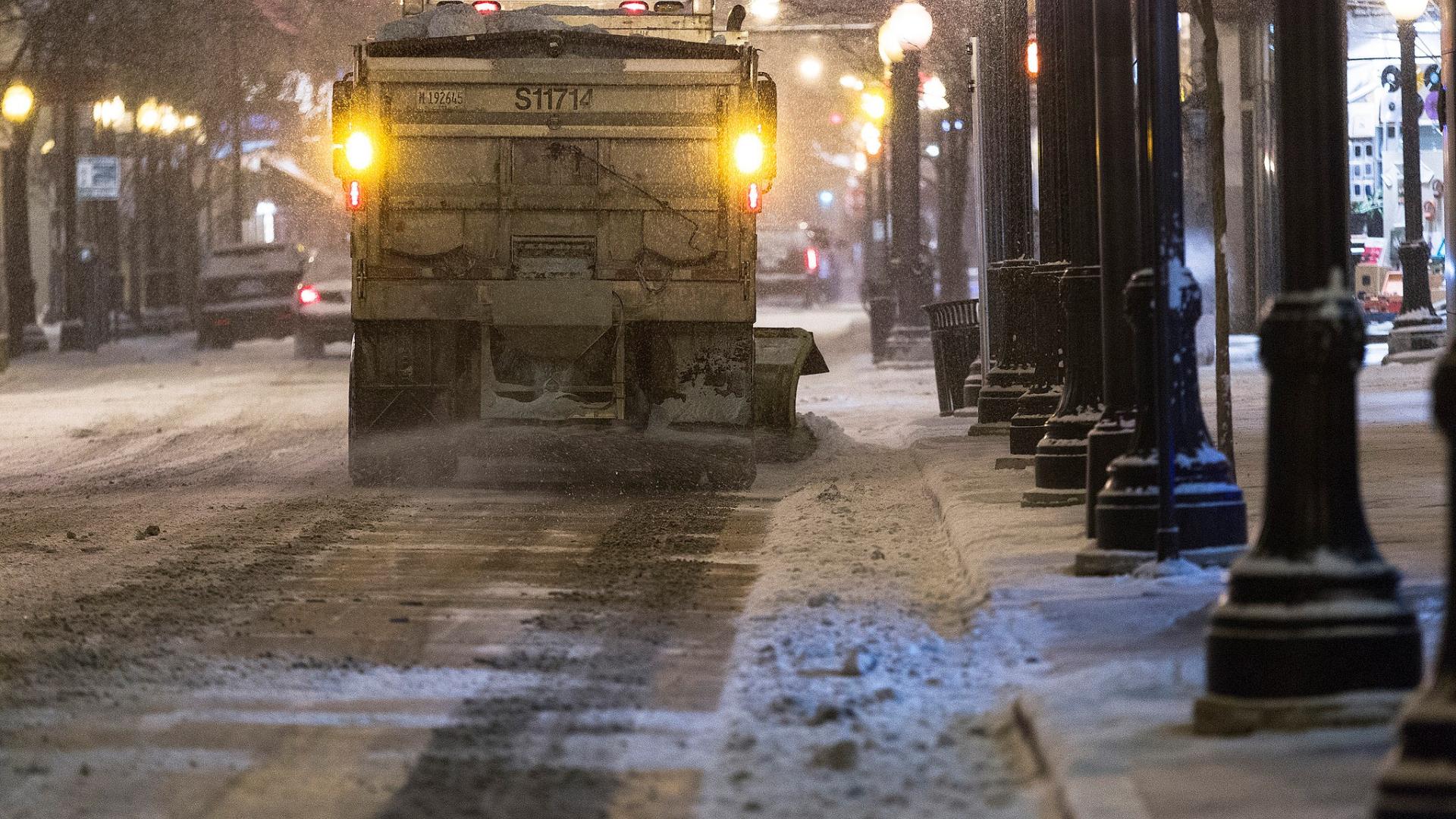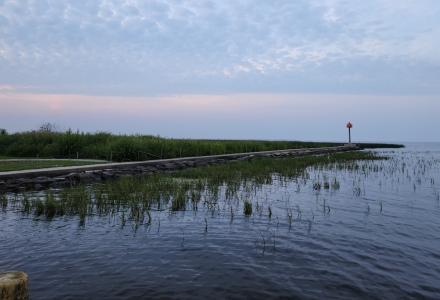
Road salt can keep winter roads safe to drive on, but that same salt is getting into freshwater supplies, impacting drinking water for communities and aquatic habitats for native plants and animals. New guidance from the Ontario Good Roads Association and Conservation Ontario aims to give municipalities and salting contractors a better idea on how they can find a balance to save lives, property and the environment.
A study released earlier this year found that lakes in North America surrounded by more than 1 percent of impervious land cover (such as concrete or another material that water can’t penetrate) are growing increasingly salty. This is because of runoff and because those lakes tend to be in more urbanized areas, said Hilary Dugan, limnologist and assistant professor with the University of Wisconsin’s Center for Limnology. With current trends, the study finds that many lakes in North America will exceed the US Environmental Protection Agency’s salinity threshold for aquatic life within the next 50 years.

The study looked at about 240 lakes in the American Northeast and Midwest, as well as those in the corresponding Canadian provinces. Dugan said that using long-term datasets – going back at least 10 years, and as long as 70 years for some lakes – they found a steady trend of water being contaminated by more and more sodium chloride, indicating that road salt is getting into the water.
Removing high concentrations of chloride and sodium from water is an expensive, technologically advanced undertaking akin to the desalinization plants used to convert ocean water to drinking water, said Chitra Gowda, source water protection lead with Conservation Ontario. Preventing large amounts of salt from entering the water system is a more economically viable strategy to protect drinking water sources, Gowda said. After working with municipal road managers, conservation authority staff and federal and provincial experts, the Ontario Good Roads Association and Conservation Ontario released the recommended guidance this past summer.
“This is a multiple stakeholder approach to try and solve the issue of road maintenance and road safety, and elevated levels of road salt in our water,” Gowda said.
The guidelines are focused primarily on salt vulnerable areas around municipal drinking water sources such as water intakes and wellheads, where sodium and/or chloride levels may be or are at greater risk for being elevated.
Approaches municipalities can take include: having risk management plans for private parking lots and roads to address road salt storage, application and impacts on drinking water sources; considering the impact on water quality with development and zoning plans; training managers, road operations staff and contractors on salt application and impacts on the water supply; and updating municipal salt management plans regularly to better protect drinking water sources.
The guidance includes suggestions for those management plans to use salt more efficiently. On the inexpensive end, greater education on the temperature ranges where salt and other de-icing techniques are ineffective can help minimize salt waste and overuse. Using brine to pretreat roads can prevent black ice and frost from forming, and pretreating salt with brine can make it less likely to bounce off the road and improve its effective temperature range.
Moreover, new technology – such as computerized salt spread controllers, temperature sensors, spreader calibration and reinforced plow blades can lead to reduced salt usage while still getting the same degree of road safety, the guidelines say. This might also require updated training for truck operators, with refresher courses each season.

More efficient and effective road salt usage should help at-risk water systems recover, Dugan said. As water eventually moves out of the rivers and lakes over time, it’ll take the salt with it.
“If the (salt) inputs are dealt with, the lakes will naturally flush themselves out,” Dugan said. “Unlike mercury or phosphorus --- as those can stay internally in the lakes in the food web or in the sediment --- salt is much simpler. What we need to do is decrease usage.” As of a 2005 study, an estimated 18 million metric tons of road salt was spread in the US each year; a 2012 Environment Canada report found that 5 million metric tons were spread in Canada annually.
The next step for research is to determine what specific impacts this additional salt is having on particular plants and wildlife living within these lakes, Dugan said.
While these guidelines were developed for the province of Ontario, Gowda notes that they should be applicable in many other areas in Canada and the United States. As long as salt-vulnerable areas have been identified, local municipalities and state/provincial governments can determine the best way to ensure that motorists and sources of fresh water are safe.

Kevin Bunch is a writer-communications specialist at the IJC’s US Section office in Washington, D.C.



